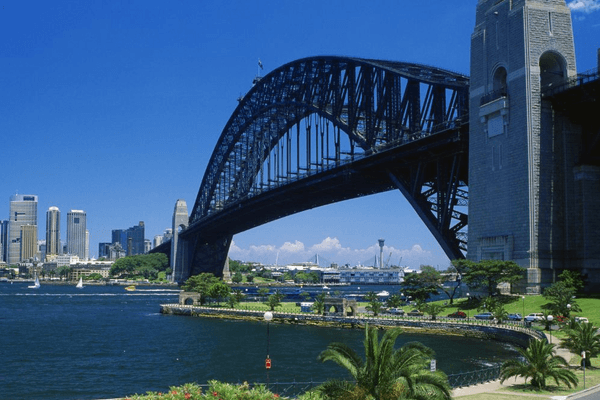
Share
Foreign investors surge back into Australian commercial property with $7.4 billion investment in 2025, driving 26% growth as offshore buyers dominate market.
International money is flooding back into Australian commercial property at levels not seen for years. Foreign buyers have pumped $7.4 billion into the market in 2025 alone, marking a dramatic 26% surge from the previous year and signalling Australia’s return to the global investment spotlight.
This isn’t just recovery from pandemic disruptions. Offshore investors now control 44% of all commercial real estate transactions this year, well above historical averages. The numbers tell a story of renewed confidence in Australia’s commercial property fundamentals and the country’s appeal as a stable investment destination.
Record investment volumes reshape market dynamics
The scale of foreign capital flowing into Australian commercial property has caught many industry observers by surprise. At $7.4 billion, offshore investment is already tracking to exceed the combined totals for 2023 and 2024.
Industry data shows this represents genuine acceleration rather than simple recovery, with foreign buyers allocating capital to Australian assets with increased urgency and conviction.
Total commercial investment activity reached $46.6 billion in the first quarter of 2025, with offshore buyers representing an increasingly dominant share. This level of international participation is reshaping pricing dynamics and competition across multiple property sectors.
New South Wales dominates foreign capital flows
New South Wales has captured an overwhelming 55% of offshore investment volumes over the past 12 months, cementing Sydney’s position as Australia’s premier destination for international commercial property investment. Foreign buyers have historically accounted for 40% of purchases in NSW, compared to just 20% in other states.
The state’s dominance reflects international investors’ preference for Sydney’s Central Business District office buildings, where greater market liquidity and substantial prime-grade office space create attractive investment conditions. Industry participants note the transparency and scale of Sydney’s commercial property market continues to draw substantial offshore capital.
Queensland has secured second position, attracting 20% of foreign investment flows. The state’s appeal combines diverse commercial property offerings with competitive pricing relative to southern markets. Strong population growth across Queensland’s major centres supports tenant demand across industrial, office, and retail sectors.
Victoria tells a markedly different story. The state’s share of foreign investment has plummeted to just 15%, down dramatically from its peak of 42% five years ago. This decline stems from strengthened tax disincentives for foreign buyers and weaker economic growth compared to other states.
State-based tax policies are clearly influencing investment decisions. Victoria’s additional foreign buyer taxes and land tax surcharges have made the state less competitive for international capital, causing both domestic and offshore investors to redirect funds towards more favourable markets.
Industrial properties attract strongest foreign interest
Industrial property has emerged as the standout sector for foreign investment, securing $2.9 billion in offshore capital during the first half of 2025. The sector’s exceptional occupancy rates of 98.9% and strong fundamentals driven by e-commerce growth and supply chain modernisation make it particularly attractive to international buyers.
Office assets have demonstrated remarkable resilience, recording $2.8 billion in foreign investment despite broader market challenges. More than half of all office sector investment capital now comes from overseas sources, with international investors showing greater confidence than domestic buyers.
“Foreign investors are identifying pricing opportunities in office assets that local buyers are overlooking,” according to industry analysis. “Despite total office sales remaining below pre-pandemic levels, offshore capital is driving activity in this sector.”
Retail properties attracted $1.5 billion in foreign investment, with international buyers focusing on well-located assets with strong tenant covenants. The sector maintains appeal despite ongoing challenges from changing consumer behaviour and online retail growth.
Across all sectors, foreign investors are demonstrating sophisticated market knowledge and selective acquisition strategies. They’re targeting assets offering stable income streams and medium to long-term capital appreciation potential.
Multiple market forces drive investment surge
Several converging factors have created highly favourable conditions for foreign investment in Australian commercial property. Recent Reserve Bank of Australia interest rate cuts have reduced capital costs and triggered cap rate compression (the decrease in property yields), creating new acquisition opportunities previously considered uneconomical.
Cap rate compression occurs when property yields fall as prices rise, typically indicating strong investor demand and confidence in future income streams.
Currency movements have played a crucial role in attracting foreign capital. The Australian dollar hit a five-year low against the US dollar in April 2025, effectively providing international investors with a discount on Australian asset prices when converted from their home currencies.
Australia’s political and economic stability has become increasingly attractive as global uncertainty rises. International capital is seeking safer havens as political volatility and fiscal uncertainty affect traditionally dominant investment markets like the United States.
Government reforms have streamlined the Foreign Investment Review Board (FIRB) approval process. FIRB oversees foreign investment applications to ensure they align with national interests. Recent changes make it easier for passive institutional investors and those with strong compliance records to invest in commercial real estate, reducing processing times and administrative complexity.
Processing times have improved significantly, with almost 50% of proposals now processed within the statutory 30-day timeframe, compared to previous delays that often extended beyond 60 days.
American capital leads international charge
American investors dominate foreign capital flows into Australian commercial property, accounting for the largest share of offshore investment activity in 2025. US-based buyers recorded $22.9 billion in approved commercial investment proposals in the first quarter alone, a significant increase from $4 billion in the previous quarter.
Currency advantages have likely contributed to this American investment surge. With the Australian dollar trading at low levels against the US dollar, American investors can acquire quality Australian assets at attractive prices when measured in US dollar terms.
US institutional investors are seeking geographic diversification beyond their home market. Australia’s transparent legal system, stable political environment, and sophisticated commercial property market infrastructure align with American investment requirements and risk management frameworks.
American investment interest spans multiple property sectors, with US buyers active in industrial, office, and retail markets nationwide. This broad-based approach suggests American investors view Australian commercial property as a core portfolio component rather than opportunistic tactical investments.
Other major investing nations, including Japan, Germany, France, and Singapore, continue maintaining significant interest in Australian commercial property, though at lower absolute levels than American investors. This diversity of capital sources provides market stability and reduces dependence on any single international funding source.
Market outlook suggests sustained momentum
Industry experts anticipate current investment momentum will continue throughout 2025, supported by favourable economic conditions and ongoing international demand for Australian commercial property assets.
The combination of relatively attractive yields compared to many international markets, stable tenant demand across most sectors, and continued economic growth in Australia’s major cities creates a compelling investment proposition for international buyers.
“Australia continues to look attractive to investors even though yields have tightened,” according to property market analysis. “These low yields are not uncommon globally when we compare Australian assets to other major markets such as London, New York, Tokyo and Paris.”
However, potential challenges remain on the horizon. Rising construction costs, labour shortages in some markets, and the possibility of future interest rate increases could impact investment returns and slow offshore capital inflows.
The sustainability of current investment levels will largely depend on broader global economic conditions and the relative performance of alternative international investment destinations. Australia’s commercial property market appears well-positioned to maintain its attractiveness to foreign investors, provided economic fundamentals remain strong.
Market implications for all participants
The surge in foreign investment is reshaping competitive dynamics across Australian commercial property markets. Local investors and property companies face increased competition for premium assets, particularly in major metropolitan markets where international buyers are most active.
Property valuations have responded to increased foreign demand, with cap rate compression evident across multiple sectors and geographic markets. This trend benefits existing property owners through increased asset values but presents challenges for new investors seeking attractive entry points.
The increased presence of international capital is driving greater market sophistication. Foreign investors bring advanced analytical techniques and global best practices to Australian commercial property investment and management, raising overall market standards.
For property managers and service providers, the growth in foreign investment creates opportunities to expand client bases and develop expertise in serving international investors. These clients often have different requirements and expectations compared to domestic investors, including more sophisticated reporting and risk management frameworks.
Australia reclaims global investment spotlight
Australia’s commercial property market has demonstrated remarkable resilience and attractiveness through this surge in foreign capital. With $7.4 billion in offshore investment already recorded this year and strong momentum continuing, the market appears positioned for sustained growth.
The geographic concentration in New South Wales and Queensland, combined with robust performance across industrial and office sectors, highlights the sophisticated approach international investors are taking to Australian commercial property. Strong fundamentals, including high occupancy rates and stable tenant demand, support continued foreign interest.
As global economic uncertainty persists, Australia’s political stability, transparent legal system, and sophisticated market infrastructure continue attracting capital seeking secure, long-term investment opportunities. The streamlined FIRB approval process and competitive currency levels provide additional advantages for international investors.
The market transformation driven by foreign investment represents more than cyclical recovery. It reflects Australia’s strengthened position in global commercial property investment flows and the country’s appeal as a stable, profitable destination for international capital.
Further questions
What is driving the surge in foreign investment in Australian commercial property?
Which Australian states are attracting the most foreign commercial property investment?
Which commercial property sectors are performing best with foreign investors?
How significant is American investment in Australian commercial property?
What are the market implications of increased foreign investment in Australian commercial property?
This is general information only and is subject to change at any given time. Your complete financial situation will need to be assessed before acceptance of any proposal or product.





